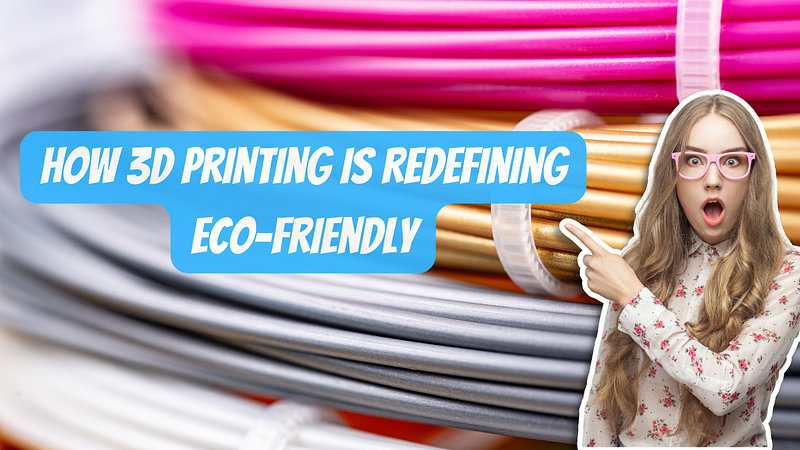Sustainable Solutions: How 3D Printing is Redefining Eco-Friendly Manufacturing

In an era where sustainability is paramount, 3D printing has emerged as a beacon of hope for eco-conscious manufacturing. This revolutionary technology is reshaping the production landscape by offering a more sustainable alternative to traditional manufacturing methods.
Material Efficiency
One of the most significant advantages of 3D printing lies in its material efficiency. Unlike subtractive manufacturing processes that generate substantial waste, 3D printing is an additive process. It deposits material layer by layer, using only the amount needed for the final product. This means less raw material is consumed, leading to reduced environmental impact.
Localized Production
Traditional manufacturing often involves long and complex supply chains, resulting in high transportation emissions. 3D printing, however, enables localized production. Components can be manufactured on-site or near the point of use, drastically reducing the need for long-distance shipping. This not only cuts down on emissions but also enhances supply chain resilience.
Design Optimization for Sustainability
3D printing allows for intricate and complex designs that were once unattainable through traditional methods. Engineers can now optimize designs for sustainability, incorporating features that reduce material usage, increase energy efficiency, and improve overall product lifecycle. This level of customization empowers manufacturers to create products with the environment in mind.
Recyclability and Circular Economy
3D printing materials, such as certain types of filaments and powders, can be recycled and reused. Unused material from one print job can be collected, processed, and reintroduced into the printing process. This promotes a circular economy model, where resources are maximized, waste is minimized, and the environmental impact is significantly reduced.
Energy Efficiency
Compared to many traditional manufacturing processes, 3D printing is often more energy-efficient. With precise layer-by-layer deposition, less energy is required to create intricate structures. Additionally, advancements in 3D printing technology continue to focus on reducing energy consumption, further enhancing its eco-friendly profile.
In conclusion, 3D printing is not only revolutionizing manufacturing but also driving sustainability in the industry. Its material efficiency, localized production capabilities, design optimization potential, recyclability, and energy efficiency make it a powerful tool for eco-conscious manufacturers. As the technology continues to evolve, we can expect even more innovative solutions that redefine the way we approach manufacturing with a focus on sustainability. If you’re in Madurai, consider exploring the options for 3D printing services in Madurai and 3D printer services to leverage this cutting-edge technology for your sustainable manufacturing needs.
Comments
Post a Comment